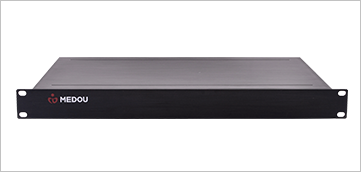as we all know, the need to record telephone calls has become more and more prosperous in recent years. this application area was originally created for security considerations and later for the recording and tracking of responsibilities. with the further development of the communications industry, the telephone recording system has also been applied to a wider range of applications, in particular sales hotline, after-sales service, dispatching telephones, consultation telephones, office telephones and other occasions are widely used. telephone recording has thus become an industry and is an important component of cti's professional field.
technically, the telephone recording system contains the following points:
1. make undisturbed recordings of both sides of the call.
2. listen directly to any line call.
3. standard (or unique) sound format, multi-channel recording playback.
4. can customize the way recording starts.
5. highly efficient voice compression technology, up to 8 times the shelf-quality compression.
6. support analog, digital, wireless and other telephone line recording.
7. flexible and fast query and retrieval, support for remote query and monitoring.
8. provide effective data backup methods.
according to the different monitoring lines can be divided into analog line recording, digital trunk line recording, voip recording, etc. from the current market situation, the larger capacity recording environment is mainly based on digital trunk lines, digital e1 lines recording is still widely used in call centers and other traffic platforms.
typical application:
open recording system integrated with business platform the platform is mainly used in large-scale traffic systems, or call center platforms, through the third-party interface of mdr equipment, to achieve integration with the business platform, seamless docking. the basic networking is as shown below:
1. the monitoring equipment is connected to the digital trunk line connected to the pstn through a high-impedance bridge and does not cause any impact on the call.
2. the monitoring equipment adopts the b/s architecture, and the configuration, management, and upgrade of the remote recording server are implemented through the user's management terminal. 3. the monitoring equipment collects the data and voice on the monitoring line in real time. at the same time as the local disk writes the file, it can upload the voice file to the disk array of the ftp server synchronously to achieve synchronous double backup. 4, through the web server to achieve a unified management of multi-point recording server, audio recording and device abnormal alarm management. 5. through the real-time interaction between the authentication program of the cti server and the service module data of the third-party interface of the recording server, the recording server is connected to the service platform.● the single-system supports 64e1 recording and provides 128e1 interface. it supports signaling signals such as no.7, no.1 and isdn, and can be flexibly configured according to user requirements.
● support multiple voice compression formats, such as adpcm, pcm, gsm, g.729a, etc.
● the system has an automatic double backup function to effectively provide voice data security.
● it can completely detect and record all outgoing calls and caller id numbers.
● direction discrimination. can determine the direction of the call, such as incoming or outgoing.
● through the network development interface, you can query and play recording files according to the channel number, time, phone number, call duration, call notes, and operators, and support various development platforms to interact with other systems.
● the device can automatically alarm on errors, over-operation or insufficient storage of hard disk, and is equipped with multiple network interfaces to ensure the smooth transmission of data and support remote maintenance and upgrade.
● supports unified network management.
|
|
